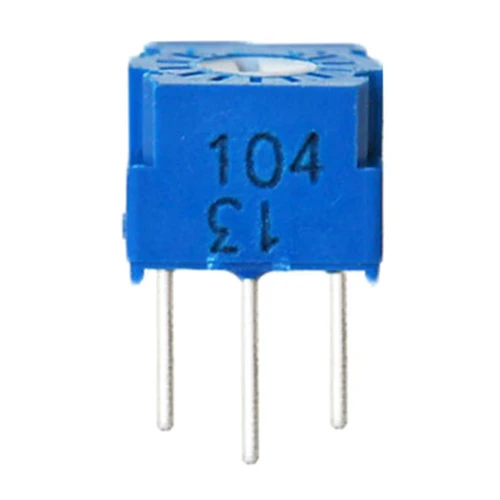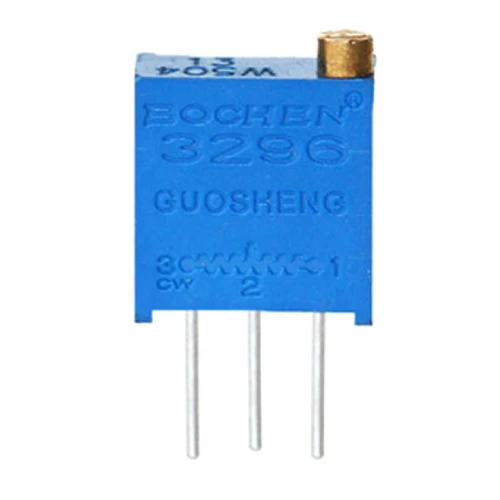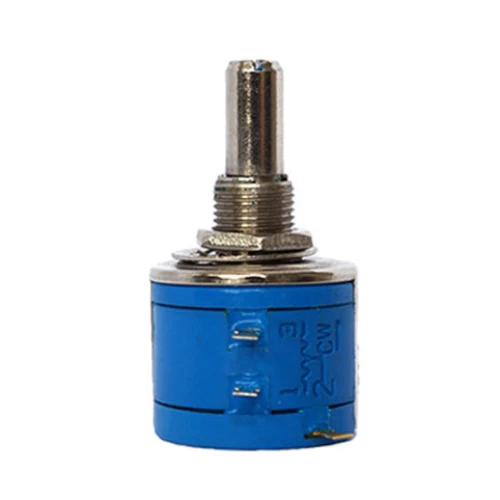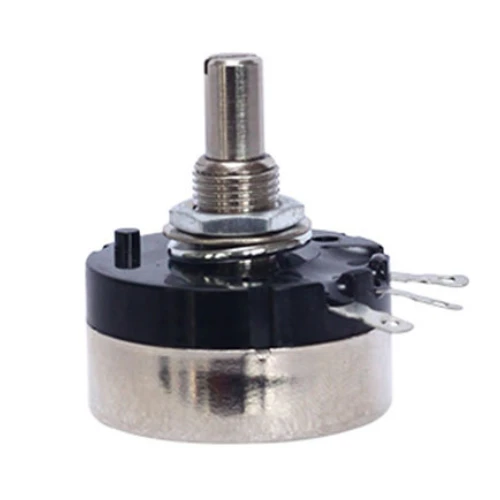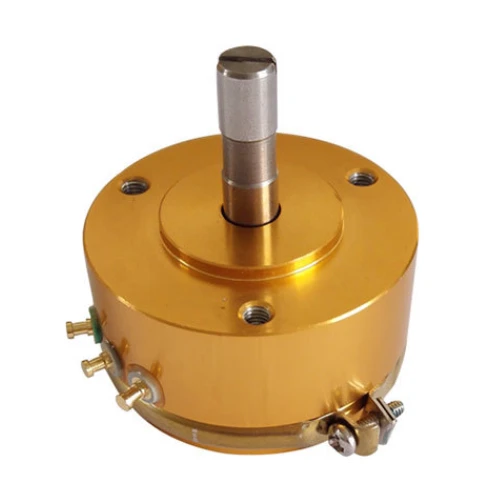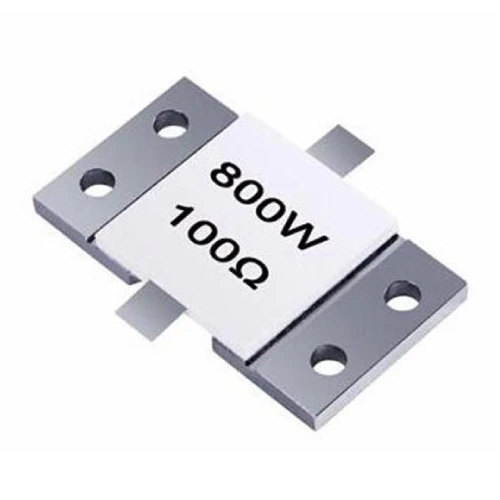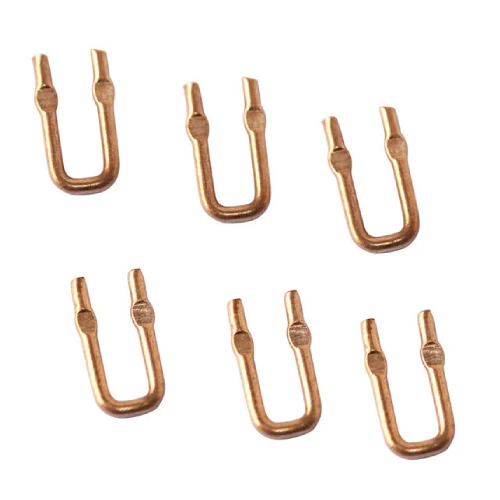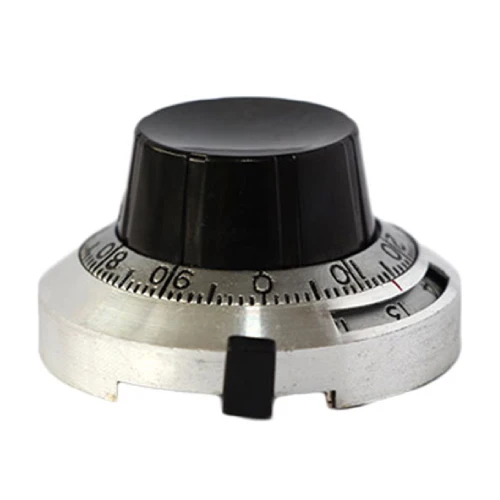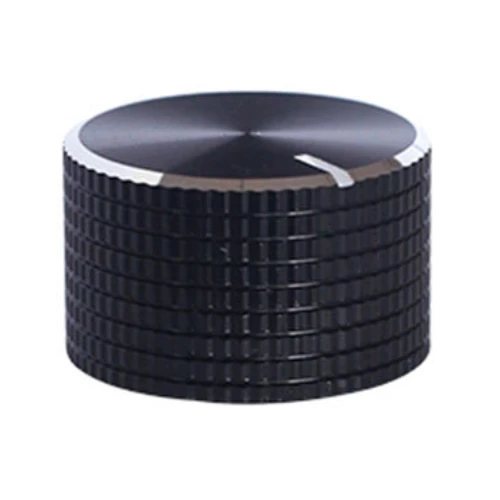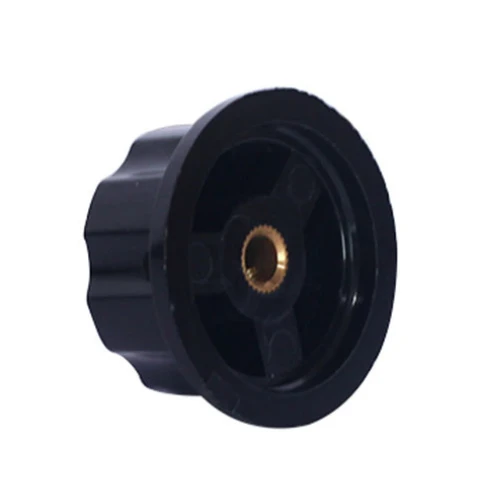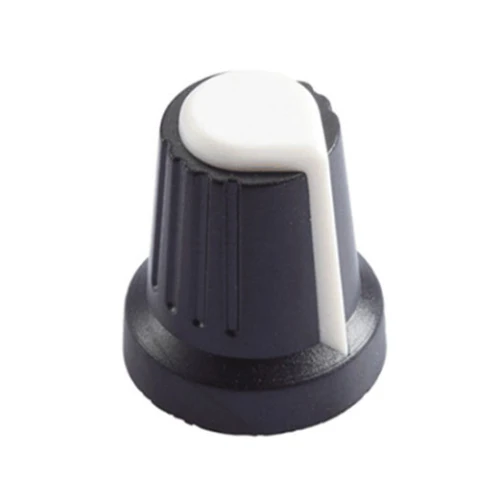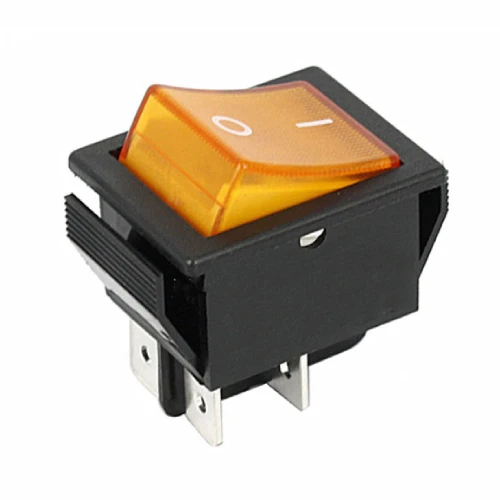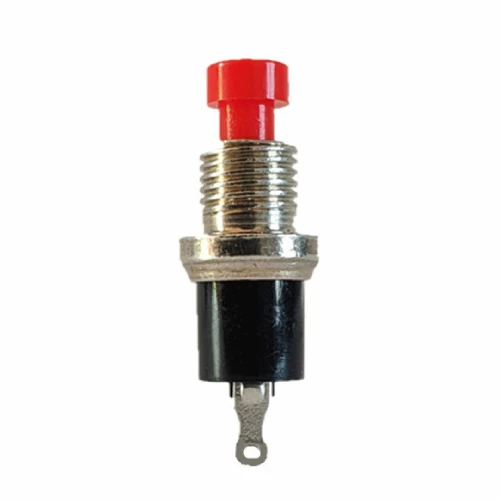Understanding Trimmer Potentiometers: A Comprehensive Guide to Adjustable Resistance
Category: Knowledge
Time: 2024-10-06
Summary: Understanding Trimmer Potentiometers: A Comprehensive Guide to Adjustable Resistance Table of Contents Introduction to Trimmer Potentiometers What Are Trimmer Potentiometers? How Do Trimmer Potentiometers Work? Types of Trimmer Potentiometers Applications of Trimmer Potentiometers.
Understanding Trimmer Potentiometers: A Comprehensive Guide to Adjustable Resistance
Table of Contents
- Introduction to Trimmer Potentiometers
- What Are Trimmer Potentiometers?
- How Do Trimmer Potentiometers Work?
- Types of Trimmer Potentiometers
- Applications of Trimmer Potentiometers
- Advantages and Disadvantages of Trimmer Potentiometers
- How to Select the Right Trimmer Potentiometer
- Maintenance and Care for Trimmer Potentiometers
- Troubleshooting Common Issues with Trimmer Potentiometers
- Conclusion
- FAQs About Trimmer Potentiometers
Introduction to Trimmer Potentiometers
In the realm of electronics, precision and adjustability are crucial for optimal performance. **Trimmer potentiometers**, often simply referred to as trimmers, serve as essential components in various electronic circuits. These miniature adjustable resistors allow for fine-tuning of resistance values, making them invaluable in applications ranging from audio equipment to intricate circuit boards. In this comprehensive guide, we will delve deep into the world of trimmer potentiometers, uncovering their functionality, types, applications, and best practices.
What Are Trimmer Potentiometers?
**Trimmer potentiometers** are variable resistors designed for adjustment during the manufacturing or calibration of electronic devices. Unlike standard potentiometers, which are often intended for frequent user adjustments, trimmers are typically set once and seldom changed. They consist of a resistive element and a wiper that moves along the element, allowing users to adjust the resistance to a precise value.
Trimmers are characterized by their compact size and can be found in various forms, including **screw, flat, and rotary styles**. They are designed to provide a **variable resistance** capability in a limited space, making them ideal for use in circuit boards where size constraints are a consideration.
How Do Trimmer Potentiometers Work?
Understanding how trimmer potentiometers function requires a look at their internal components. A typical trimmer consists of several key parts:
1. **Resistive Element**: This is the material through which electric current flows, offering resistance. Common materials include carbon and cermet.
2. **Wiper**: The wiper is a movable contact that slides over the resistive element. By adjusting the position of the wiper, users can change the resistance value.
3. **Adjustment Mechanism**: This can be a screw, a lever, or a rotary knob. Turning the adjustment mechanism repositions the wiper along the resistive track, allowing for precise control over resistance.
The relationship between voltage, current, and resistance in a trimmer potentiometer follows Ohm's Law, which states that voltage equals current multiplied by resistance (V = IR). By adjusting the resistance, users can fine-tune the voltage and current flowing through a circuit, thereby optimizing performance.
Types of Trimmer Potentiometers
Trimmer potentiometers come in several types, each suited for specific applications. Here, we explore the most common types:
1. Screw Trimmer Potentiometers
Screw trimmers feature a small screw on the top, which, when turned, adjusts the wiper's position along the resistive track. They are widely used in applications where minimal adjustments are required.
2. Rotary Trimmer Potentiometers
These trimmers have a knob that can be rotated to change the resistance. They often provide a more substantial range of adjustment compared to screw types and are popular in audio devices.
3. Flat Trimmer Potentiometers
Flat trimmers are compact and designed for surface mounting. They are ideal for densely packed circuit boards and offer a straightforward adjustment mechanism.
4. Digital Trimmer Potentiometers
Digital trimmers are adjustable via electronic signals rather than mechanical means. They can be programmed for specific resistance values, making them versatile for complex applications.
Applications of Trimmer Potentiometers
Trimmer potentiometers play a vital role in various electronic applications. Here are some notable uses:
1. Audio Equipment
In audio devices such as amplifiers and mixers, trimmers are used to adjust levels and balance audio signals, ensuring clear sound output.
2. Calibration of Instruments
Many electronic measuring instruments utilize trimmer potentiometers for calibration purposes, allowing technicians to set the correct readings.
3. Timing Circuits
Trimmers are often found in timing circuits, where they help fine-tune oscillator frequencies for precise timing applications.
4. Signal Conditioning
In signal conditioning circuits, trimmer potentiometers are used to adjust gain and offset voltages, enabling accurate signal processing.
Advantages and Disadvantages of Trimmer Potentiometers
Advantages
- **Compact Size**: Trimmer potentiometers are small, making them perfect for space-constrained applications.
- **Precision Adjustment**: They allow for fine-tuning of resistance, which is essential in calibration and signal processing.
- **Versatility**: Trimmers can be used in various applications, from consumer electronics to industrial equipment.
Disadvantages
- **Limited Adjustability**: Once set, they are not designed for frequent adjustments, which may not suit all applications.
- **Mechanical Wear**: The moving parts can wear out over time, leading to decreased reliability and performance.
How to Select the Right Trimmer Potentiometer
Choosing the right trimmer potentiometer involves several considerations:
1. **Resistance Value**: Determine the required resistance range for your application. Trimmers are available in various resistance values, typically ranging from a few ohms to several megaohms.
2. **Adjustability Type**: Decide between screw, rotary, or flat types based on the available space and adjustment needs.
3. **Power Rating**: Ensure the trimmer can handle the operating power without overheating. This is crucial for maintaining performance and longevity.
4. **Temperature Stability**: Consider the environment in which the trimmer will operate. Some trimmers are more sensitive to temperature changes than others.
5. **Form Factor**: Evaluate whether a surface-mount or through-hole design is more suitable for your circuit board layout.
Maintenance and Care for Trimmer Potentiometers
Proper maintenance can extend the life of your trimmer potentiometers and ensure continued performance. Here are some essential tips:
- **Avoid Excessive Force**: When adjusting trimmers, do not apply excessive force to the adjustment mechanism, as this can lead to mechanical failure.
- **Keep Clean**: Dust and debris can affect performance. Regularly check and clean the trimmer area to maintain functionality.
- **Store Properly**: If trimmers are not in use, store them in a dry, dust-free environment to prevent oxidation and other damage.
Troubleshooting Common Issues with Trimmer Potentiometers
Despite their reliability, trimmer potentiometers can encounter issues. Here are some common problems and how to address them:
1. No Adjustment Effect
If adjusting the trimmer does not change the output, check the connections to ensure proper contact. The wiper may also be worn or misaligned.
2. Intermittent Operation
This could be due to dirt or oxidation on the contact surfaces. Cleaning the potentiometer may resolve the issue.
3. Physical Damage
Inspect the trimmer for any visible damage. If the adjustment mechanism is broken, replacement may be necessary.
4. Resistance Drift
Over time, resistance values may drift due to temperature changes or wear. It’s essential to recalibrate your circuits periodically.
Conclusion
Trimmer potentiometers are vital components in the world of electronics, offering adjustable resistance for precise applications. Understanding their functionality, types, and applications empowers engineers and hobbyists alike to make informed decisions when integrating them into their projects. Whether you are calibrating an audio system or fine-tuning a circuit board, the insights provided in this guide aim to enhance your knowledge and effectiveness in using trimmer potentiometers.
FAQs About Trimmer Potentiometers
1. What is the main purpose of a trimmer potentiometer?
The main purpose of a trimmer potentiometer is to allow for fine adjustments of resistance values in electronic circuits, often used for calibration or tuning.
2. Can trimmer potentiometers be adjusted frequently?
Trimmer potentiometers are designed for infrequent adjustments. They are typically set once during calibration and not meant for regular user interaction.
3. How do I know which type of trimmer potentiometer to use?
The choice depends on your specific application, space constraints, and ease of access for adjustment. Common types include screw, rotary, and flat trimmers.
4. Are trimmer potentiometers sensitive to temperature changes?
Yes, some trimmer potentiometers can be sensitive to temperature variations, leading to resistance drift. Choosing temperature-stable components is essential for critical applications.
5. Can I repair a faulty trimmer potentiometer?
In many cases, a faulty trimmer can be cleaned or realigned, but significant mechanical damage typically requires replacement. Regular maintenance can help prolong their life.
Keywords: Understanding Trimmer Potentiometers: A Comprehensive Guide to Adjustable Resistance
Related Information
Company news
-
People's Representative Newspaper - Guosheng Technology: With innovation as the lead, explore the road to a powerful country
Time:2023-03-21
-
Green low-carbon integrity demonstration establishment enterprise - Chengdu Guosheng Technology Co., Ltd.
Time:2023-03-21
-
Chengdu Guosheng Technology Co., Ltd. has been awarded as the "Vice President Unit of Sichuan Good Partner Elite Club"
Time:2023-02-21
-
Good news: Chengdu Guosheng Technology Co., Ltd. has won the 2022 Chengdu Social Responsibility Brand Award
Time:2023-02-21
-
Chengdu Guosheng Technology Co., Ltd. was awarded the "Excellent Brand" award in the 2022 Sichuan Entrepreneurs Brand List.
Time:2023-01-18
-
Chinese Communist Party of Chengdu Guosheng Technology Co., Ltd. Branch was established
Time:2017-12-20
-
Guosheng Science and Technology began "to implement the norms of intellectual property management" start the work
Time:2017-12-10
-
Chengdu Guosheng Technology Co., Ltd. to declare the "high-tech enterprises" first instance passed
Time:2017-12-10
-
My company's products much favored customers
Time:2014-05-14
Knowledge
-
Understanding Trimmer Potentiometers: Essential Insights for Electronics Professionals
Time:2024-10-16
-
Top Applications of Trimmer Potentiometers in Modern Devices
Time:2024-10-08
-
Understanding Trimmer Potentiometers: A Comprehensive Guide for Professionals
Time:2024-10-07
-
Understanding Trimmer Potentiometers: A Comprehensive Guide to Adjustable Resistance
Time:2024-10-06
-
Understanding Trimmer Potentiometers: Essential Insights for Electronics Professionals
Time:2024-10-05
-
How to Properly Use a 3296 Potentiometer for Optimal Performance
Time:2024-10-04
-
Understanding the Versatility and Applications of the 3296 Potentiometer
Time:2024-10-03
-
Top Applications of the 3296 Potentiometer in Modern Electronics
Time:2024-10-02
-
Unlocking the Potential of 3296 Potentiometers: Essential Insights for Electronic Enthusiasts
Time:2024-10-01
-
Mastering Circuit Adjustments with 10K Trimmer Resistors: A Comprehensive Guide
Time:2024-09-30
-
Understanding the Importance of Trimmer 10k Potentiometers in Electronic Applications
Time:2024-09-29
-
Why 10K Trimmer Resistors Are Essential for Your Electronic Projects
Time:2024-09-28
-
Understanding the Role of the Trimmer 10K in Electronic Components
Time:2024-09-27
-
Innovative Uses for the 3362 Potentiometer in DIY Electronics
Time:2024-09-26
-
Understanding the 3362 Potentiometer: Applications and Benefits in Electronic Components
Time:2024-09-25
-
The Impact of Temperature on the Performance of the 3362 Potentiometer: An In-Depth Analysis
Time:2024-09-24
-
Understanding the 3362 Potentiometer: A Comprehensive Guide for Electronic Applications
Time:2024-09-23
-
A Deep Dive into the Benefits of Using Trimmer 3296 in Circuit Design
Time:2024-09-22
-
Understanding Trimmer 3296: A Comprehensive Guide for Professionals
Time:2024-09-21
-
Exploring the Versatility of the Trimmer 3296 in Potentiometer Applications
Time:2024-09-20
-
Understanding the Trimmer 3296: A Comprehensive Guide for Electronic Component Enthusiasts
Time:2024-09-19
-
Maximize Efficiency: Selecting the Right Trimming Potentiometer for Your Applications
Time:2024-09-18
-
Understanding the 3262W Trimmer: Essential Insights for Professionals
Time:2024-09-17
-
Discover the Advantages of Utilizing Trimmers in Electronic Circuits for Optimal Performance
Time:2024-09-16
-
Understanding the 3262W Trimmer: A Comprehensive Guide for Electronic Components
Time:2024-09-15
-
Enhancing Precision Technology: The Impact of Rotary Encoders and Digital Potentiometers
Time:2024-09-14
-
Understanding Rotary Encoders and Digital Potentiometers: A Comprehensive Guide for Professionals
Time:2024-09-13
-
Revolutionizing Electronic Interfaces with Digital Potentiometers and Rotary Encoders
Time:2024-09-12
-
Understanding the Benefits of Rotary Encoder Digital Potentiometers in Electronics
Time:2024-09-11
-
Mastering the Art of Precision Control with WH138 Potentiometers: A Comprehensive Guide
Time:2024-09-10
-
Understanding the WH138 Potentiometer: A Comprehensive Guide for Professionals
Time:2024-09-09
-
The Evolution of WH138 Potentiometers: From Analog to Digital Age
Time:2024-09-08
-
Understanding WH138 Potentiometers: Key Features and Applications
Time:2024-09-07
-
The Impact of 800W Resistors on Circuit Efficiency and Stability
Time:2024-09-06
-
Understanding the Significance of 800W Resistors in Electronic Components
Time:2024-09-05
-
800W Resistors: Innovating Power Distribution in Electronic Devices
Time:2024-09-04
-
Understanding 800W Resistors: Key Insights for Your Electronic Projects
Time:2024-09-03
-
Day 50: Innovative Ways to Use 6mm Potentiometer Knobs in Your Projects
Time:2024-09-02
-
Day 51: Mastering Precision Control with 6mm Potentiometer Knobs - Unlocking Ultimate Performance
Time:2024-09-01
-
Day 52: Elevate Your Electronics with Stylish 6mm Potentiometer Knobs
Time:2024-08-31
-
Unlocking the Potential of Your Devices with 6mm Potentiometer Knobs: A Comprehensive Guide
Time:2024-08-30
-
Why Choosing the Right Potentiometer Matters: A Comprehensive Exploration of W503 Models
Time:2024-08-29
-
Understanding the W503 Potentiometer: A Key Component in Electronics
Time:2024-08-28
-
Unlocking Precision: The Versatile Applications of W503 Potentiometer
Time:2024-08-27
-
Understanding the W503 Potentiometer: A Key Component in Electronics
Time:2024-08-26
-
Top 5 Benefits of Using Trimmers in Circuit Design: Elevate Your Electronic Projects
Time:2024-08-25
-
Understanding the Role of Trimmer Resistors in Electronic Applications
Time:2024-08-24
-
Unlocking Precision: How Trimmers Revolutionize Electronic Components
Time:2024-08-23
-
Understanding the Trimmer 100k: A Comprehensive Guide to Potentiometers
Time:2024-08-22
-
Why the Trimmer 3296 is Essential for Your Electronic Projects
Time:2024-08-21
-
Understanding the Functionality and Importance of Trimmer 3296 in Electronic Components
Time:2024-08-20
-
Unlocking the Potential of the Trimmer 3296: A Comprehensive Guide to Precision and Performance
Time:2024-08-19
-
Understanding Trimmer 3296: A Comprehensive Guide to Potentiometers
Time:2024-08-18
-
Mastering the 3362 Potentiometer: Essential Tips and Best Practices for Effective Design
Time:2024-08-17
-
Understanding the 3362 Potentiometer: A Key Component in Electronics
Time:2024-08-16
-
Step-by-Step Guide: How to Install a 3362 Potentiometer for Optimal Performance
Time:2024-08-15
-
Understanding the 3362 Potentiometer: A Key Component in Electronic Circuits
Time:2024-08-14
-
Unlocking the Potential of Your Circuit: How 10K Trimmer Resistors Work
Time:2024-08-13
-
Understanding the Role of Trimmer 10k Potentiometers in Electronic Circuits
Time:2024-08-12
-
10K Trimmer Resistors: The Ultimate Guide to Precision Tuning
Time:2024-08-11
-
Understanding the Importance of the Trimmer 10K in Electronic Components
Time:2024-08-10
-
Why the 3296 Potentiometer is a Must-Have for Your Electronics Toolkit
Time:2024-08-09
-
Understanding the 3296 Potentiometer: A Key Component in Electronic Applications
Time:2024-08-08
-
Unlocking the Versatility of the 3296 Potentiometer in Electronic Circuits
Time:2024-08-07
-
Understanding the 3296 Potentiometer: A Comprehensive Guide for Electronics Enthusiasts
Time:2024-08-06
-
Why Trimmer Potentiometers are Essential for Circuit Calibration
Time:2024-08-05
-
Understanding Trimmer Potentiometers: Essential Insights for Electronics Professionals
Time:2024-08-04
-
Unlocking Precision: The Role of Trimmer Potentiometers in Electronics
Time:2024-08-03
-
Understanding Trimmer Potentiometers: A Guide for Electronics Enthusiasts
Time:2024-08-02
Industry information
-
Extrusion process with the mold and extrusion die how to choose
Time:2017-12-20
-
Talking about the Cable Security Level of Wiring Specification
Time:2017-12-20
-
Discussion on High Voltage XLPE Insulation Power Cables
Time:2017-12-20
-
Discussion on Irradiation Crosslinked Power Cables
Time:2017-12-20
-
Talking about superconducting cable compared with conventional cable has the following advantages
Time:2017-12-20
-
Cable detection technology
Time:2017-12-20
-
Identify the quality of the cable can be started from a few simple ways
Time:2017-12-20
-
Factors Affecting RTD Temperature Sensor Measurement
Time:2017-12-18
-
Commonly used low-voltage cables have what
Time:2017-12-18
-
Talking about the cloth wire knowledge
Time:2017-12-18
-
2014 China's electronic components industry welcome development opportunities
Time:2014-05-24

